Lohri Luxe
This recipe has been crafted by Tsarina Abrao Vacha (@tsadough on Instagram) for Dough’s community blog as a Guest Writer.
Herein, she recollects her earliest association with Lohri and the elements that inspired this indulgent celebration of the flavours associated with it.
Jump to Recipe
When I was in third grade, back in the 70s, there was a page in my Social Studies textbook with an illustration of a robust bonfire, sugarcane and lots of happy faces, stating that Lohri was a festival in the Punjab region celebrated in mid January marking the passing of the winter solstice. A celebration of more light, positivity, promise and new beginnings.
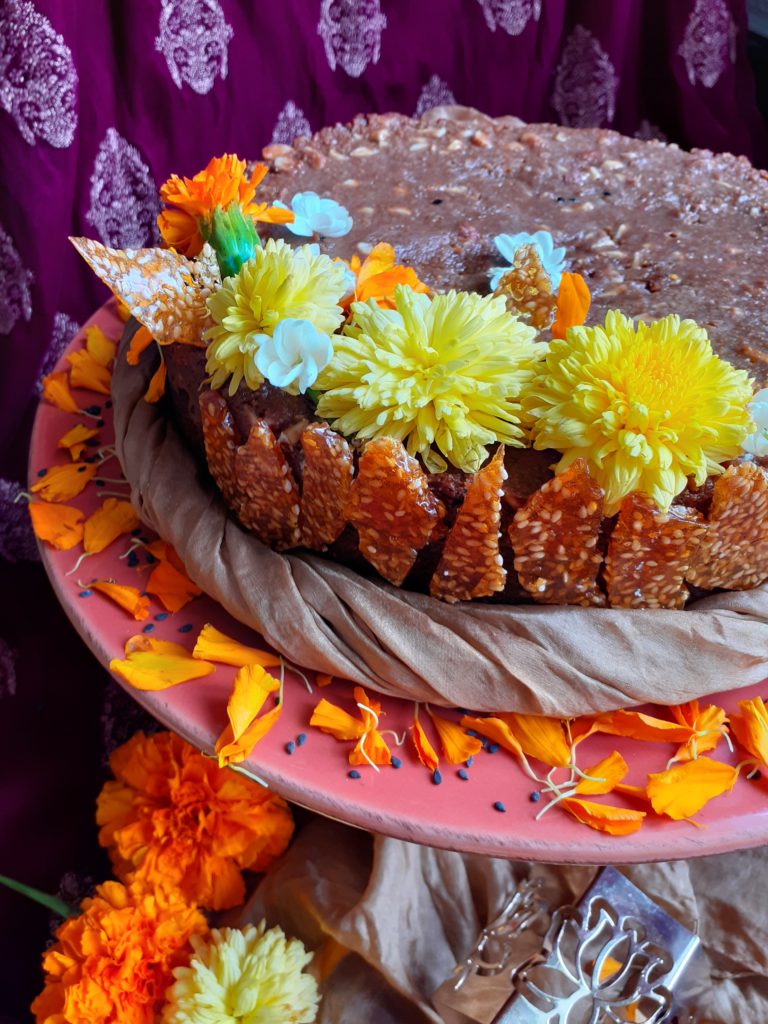
Living 2000 miles down South, this was my only connection with the festival till about a decade ago. Amongst hampers of fruit cakes and Christmas treats that showed up at home, there was one curious different box – not the usual festive red and green with baubles, stars and tinsel, but a vibrant marigold orange with colourful phulkari motifs and a brocade ribbon. A box of Lohri goodies!
Nestled inside were a selection of delectable sweets crafted from the season’s best produce. My eyes followed along rows of glistening, earthy, nutty Gajak – a sesame, jaggery and nut brittle; cubes of chewy, grainy, toffee like Doda – studded with nuts; ghee laden soft and crumbly Panjiri ladoos – made from whole wheat flour and a mélange of nuts. It was a wonderfully indulgent celebration of flavours!
It’s that time of the year again – though this time it’s the new normal of “virtual” celebrations and e-meets. It’s time to dip back into sweet moments of nostalgia and cherish them. So here’s a sweet treat that I’ve created, imbibing my favourite festive flavours of Lohri, but in a new avatar that’s closer to home for me and #MadeWithTWF!
Lohri Luxe
Cuisine: FusionDifficulty: Medium12
servings20
minutes40
minutesThis is a decadent, torte style cake. I decided to use the very rustic heirloom flour Reliq and the organic variety Indie from TWF’s whole wheat portfolio for the base. They were then roasted with almond powder in ghee (Panjiri style) to create an eggless cake with a baked topping (inspired by Doda) and garnished with golden shards of Til Gajak for some variety in texture!
Ingredients
- Dry mix for the cake
300g Jaggery powder
75g Almond flour
50g Ghee
50g White sesame seeds
1 1/2 tsp Baking powder
1 1/2 tsp Baking soda
½ tsp Dry ginger powder
- Wet mix for the cake
300g Natural curd
150g Ghee
150ml Milk (room temperature)
- For the Topping
200g Paneer cubes
100g Jaggery powder
4 tbsp Ghee
3 tbsp Fresh curd
2 tbsp Condensed milk (or cream, if you want it less sweet)
1 tbsp Cocoa powder
1 tsp Liquid glucose (or honey)
¼ tsp Cardamom powder
Directions
- Starting with the cake
- Roast the flours with the almond powder and ghee (from the dry mix list) in a heavy pan, over low heat for about 10 minutes till it is grainy and slightly coloured. Keep aside to cool fully.
- Meanwhile, prepare a 9” round loose bottomed pan, lined with parchment sheet for baking.
- Now add baking powder, baking soda, ginger powder and jaggery powder. Sieve together into a mixing bowl.
- Mix the ghee (from the wet mix list), milk and curd in another bowl till combined.
- Pour over the dry ingredients and mix gently, then fold in the sesame seeds.
- Put into the prepared pan and bake for 30 mins.
- Now to the topping
- Put paneer, curd, cocoa, jaggery in a food processor or blender. Pulse 3 times to get a grainy mixture.
- Pour into a pan, cook till it thickens and then add liquid glucose and ghee. Stir well till it starts leaving the sides of the pan.
- Take it off the heat and cool. Add cardamom powder and condensed milk/ cream to get a thick, spreadable consistency.
- Back to the Cake
- Spread the topping we just made over the hot cake and return to the oven and bake for another 10 minutes.
- Leave to cool and remove from the pan.
- Decorate with pieces of the Til (sesame) brittle or Gajak, and do click some pictures before you dig into this indulgence!
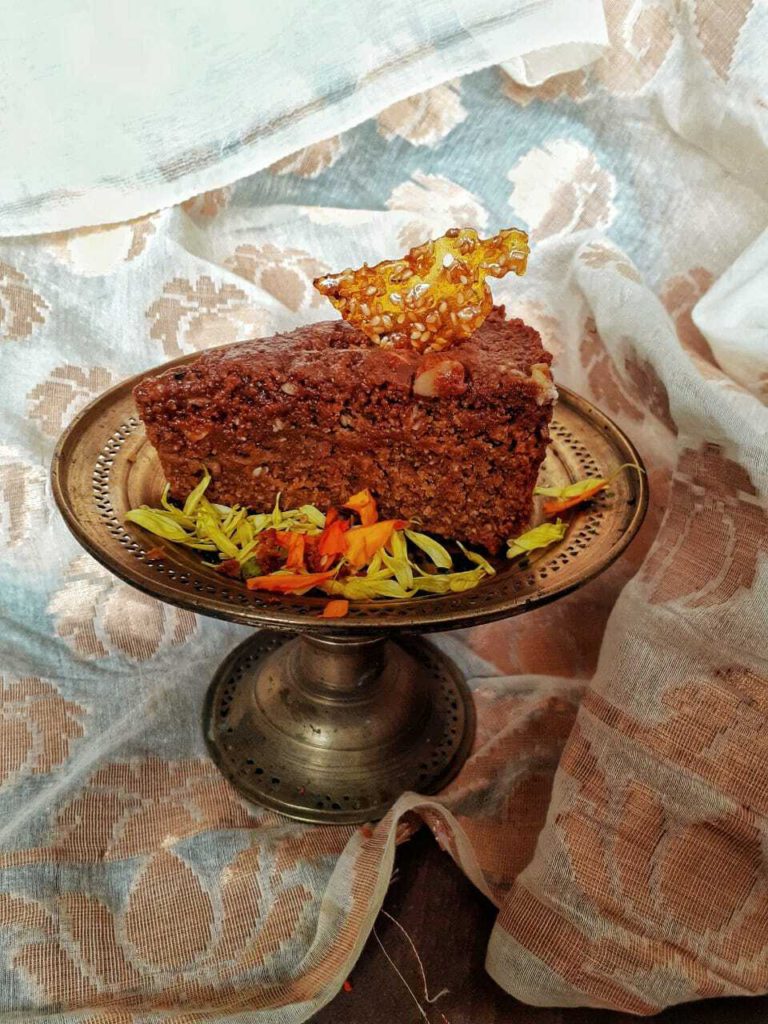
Meet the writer!
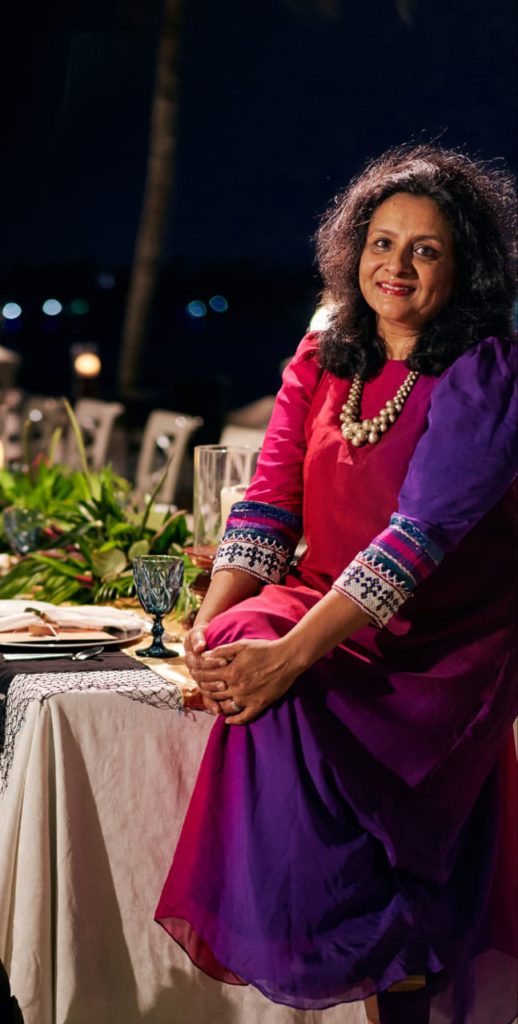
Tsarina Abrao Vacha (@tsadough on Instagram)
Guest writer, and an explorer of foodscapes
An architect by profession, Tsarina Abrao Vacha calls herself “An Architect of facades and feasts”
For over 30 years, (22 of which were overseas) the synergies between design and food have been the inspiration behind her creations. Among other things, she also dabbled with bespoke interiors, tablescapes and curated food experiences. When not at her drawing board, or on a site, Tsarina likes to immerse herself in scripting recipes, baking sourdough and healthy treats, hosting supper clubs and researching vintage/ heirloom food traditions. You can reach her on her instagram – @tsadough.


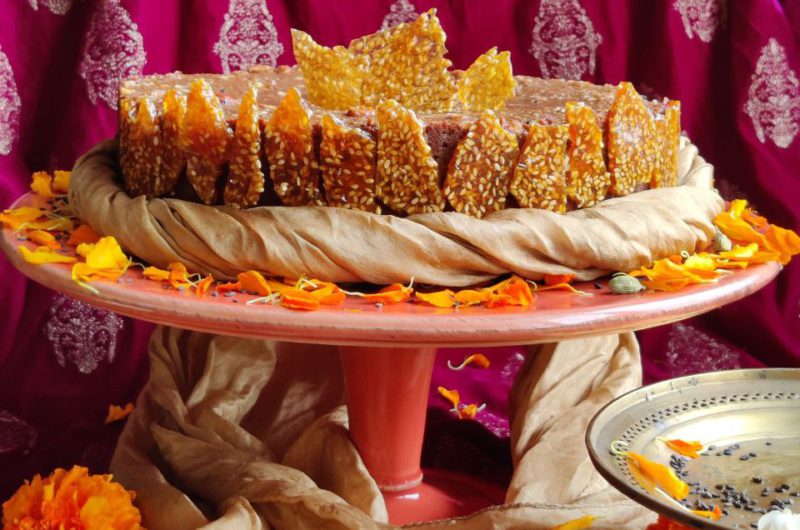
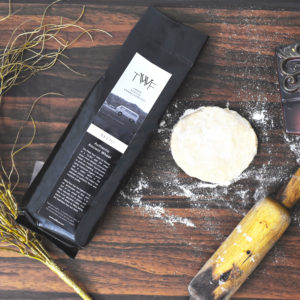

Responses